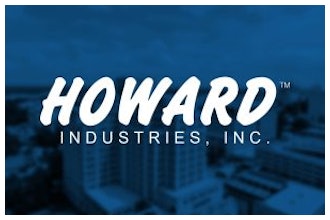Migrating the combined entities onto the same enterprise application is considered a best practice for bringing together merged entities into a single business unit.
After a merger or acquisition, migrating the combined entities onto a common enterprise application is considered a best practice for uniting merged entities into a single business unit.
The North American divisions of Colfax Corp., a manufacturer of pumps and valves that grew rapidly by acquisition in the first few years of the 21st Century is a case in point. Within months of acquiring companies across the United States, Colfax has moved these companies onto a single instance of IFS Applications, which is flexible enough to accommodate the varied business models and manufacturing modes of various Colfax divisions. Colfax’ experience also illustrates how rapidly new divisions can be brought onto IFS Applications after an acquisition. Amazingly, Colfax has migrated newly-acquired companies onto IFS Applications in as little as nine weeks!
Colfax Corporation is a world leader in the development, engineering, manufacturing, distribution, service and support of pumping and fluid handling systems. Specializing in positive displacement and centrifugal technologies, the company now owns product lines that target a wide range of industries including power generation, oil and gas, commercial and navy marine, and industrial applications. In North America, its brands include Fairmount Automation, IMO, LSC, Portland Valve, Warren and Zenith, all brought into the Colfax fold through acquisition, and all currently on or in the process of being moved onto IFS Applications. According to Colfax’ Senior Business Analyst Jay Michael, IFS Applications was implemented at the various companies on very tight timelines, sometimes as little as nine weeks.
Initial implementation
In 2002, Colfax consisted of three sites in Monroe, N.C., Columbia, Ky. and Warren, Mass. All three locations were running on Compass Contractor, an aging system for defense contractors from Western Data Systems, but the divisions were not all on the same database. For its initial implementation, Senior Business Analyst Jay Michael said the company took a slow, conservative approach.
“We did the implementation in two phases,” Michael said. “After our first phase, which took eight months, we did a static go-live that October. We had taken in data on customers, suppliers, parts, routes, structures but no transactional information or orders, and continued to work in the old system. We did dual maintenance and let people work with IFS to become more familiar with the new environment. This was inconvenient to a certain extent, but when we dropped in live data including customer orders, shop orders and purchase orders, it was easier for people to get up to speed. We went live at Monroe and Columbia on Jan. 2 of 2003, and our CFO said it was the quietest go-live he had ever seen. Normally, you have someone running around with their hair on fire.”
Warren came up one month later, according to Michael, to allow IFS to create a custom migration tool to pull data into IFS Applications’ Dynamic Order Processing (DOP) functionality.
In 2004 and 2005, Colfax migrated two more divisions, Zenith and Portland Valve, onto IFS Applications, and brought Fairmont Automation on board in 2008. Two additional locations are scheduled for implementation in the course of 2008, and a final location to be scheduled later.
“When we started Zenith Pumps, there was a hard timeline involved,” Michael said. “They were formerly a division of Parker-Hannifin Corp., and we were required to get them off of Parker’s financials in two months. We used SQL Server to develop some transfer programs and then we used IFS’ external supplier and customer invoice functions to pull in the data as vouchered payables and vouchered receivables. Zenith’s legacy system was a little better. They were on ManMan, which instead of being Jurassic like our WDS, it was Triassic. We ran Zenith on IFS financials exclusively for six months and then completed the rest of the implementation. It took us a total six months of work to complete the implementation with about six full time equivalents. This was not a simple implementation either, because Zenith presented us with somewhere between 4,000 and 5,000 customers, 50,000 parts and 150,000 structure records.”
Nine weeks implementation
A subsequent implementation at Portland Valve in 2005 saw implementation times reduced even further.
“When we purchased Portland Valve, we went on crash program, and started work on implementing IFS Applications Jan. 25, started our first migration Feb. 8, and went live on April 1,” Michael said. “We brought in an experienced material manager who had been involved in the Warren implementation, and he helped define how migration should go. To run that project, apart from myself, we had a controller, our materials manager and one other individual writing Crystal Reports.”
According to Michael, the fact that IFS Applications is flexible enough to be conform to existing business models and process flows helps shorten the implementation timeline. The applications can be configured for a variety of business models and process flows – eliminating a hard requirement for business process re-engineering. Michael and his associates have, particularly in later implementations, been able to avoid not only business process changes but lengthy internal discussions of how the new application environment should work.
“On our first go-live, we showed people IFS functionality, and they would respond by talking about how WDS worked,” Michael said. “The temptation is to suggest the new system should work or look like the old one. Now, we just show the management of a new division how IFS Applications works and how it relates to their needs. We don’t have time or the manpower to put eight people in a room and debate about it for six months.”
Michael stresses that the folder-based nature of IFS Applications works better for a flat organization like Colfax than it might for competing products that are based more on highly structured work flows.
“With this place running as lean as it does, there is a flat organization structure with a lot of dotted lines,” Michael said. “As our processes change, the applications have an easy time keeping up with us. If anything, the processes embodied in IFS Applications are not so much dependent on defining rigid processes in the organization as much as they are a way to facilitate best practices taught by APICS. Someone like me or a number of our managers who are APICS certified immediately understand a lot about how the applications work.”
For more information, visit http://www.ifsworld.com.






















